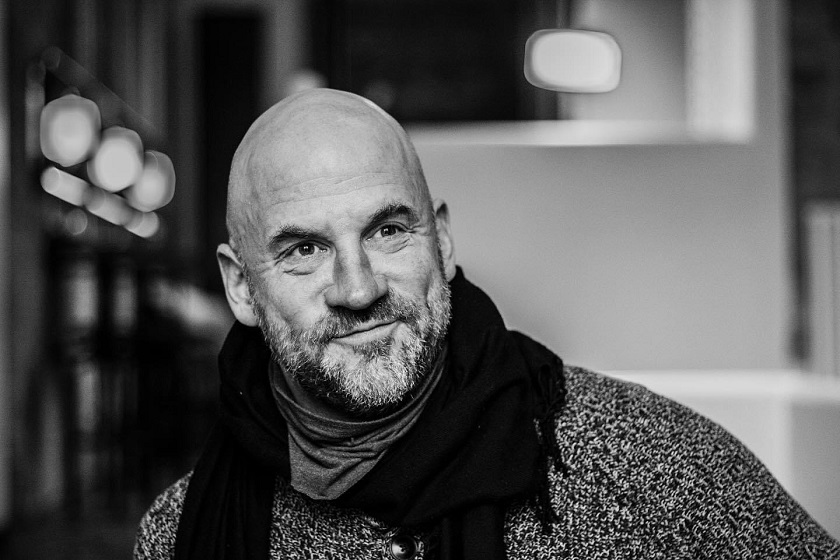
AWARD-winning American journalist David Lepeska’s first full-time reporting job was for the Kashmir Observer, from the summer of 2006 until mid-2007. His new book, Desiccated Land: An American in Kashmir, highlights the time he spent in Kashmir and his KO reporting from that period, alongside personal and geopolitical observations about South Asia.
KO: The book is a blend of reportage, memoir and travelogue. How did you arrive at this unique way of telling the Kashmir story? And how did you approach weaving these disparate elements together?
David Lepeska: Well, it wasn’t easy. It all started when KO editor Sajjad Haider came to me in the summer of 2020 and said that Kashmir Observer’s 25th anniversary year is coming up and we want to release a few books in conjunction with that. He said his initial thought was collecting my writing for the paper and he’d talked to a publisher who expressed interest.
My immediate thought was, well, we can’t just put 15-year-old news reports and features together in a book. It would need some context, to present it to the reader in a way that sheds light on how they were created, the circumstances, the personal journey, the reality. What did these writings mean at the time and what do they mean now?
I remembered that while I was living in Kashmir I’d kept a personal blog. That was the age of the blog — long before podcasts. So I was blogging every week, maybe every few days, and I dug up a handful of those old blog posts and put them alongside my Kashmir Observer reports from 2006-7 and they helped flesh out the reality of that time in Kashmir.
So you’ve got the Kashmir Observer reports, you’ve got my blog posts from that period, and then to explain it all, to add context and insight, I added a good deal of new writing — the introduction, the epilogue, little intros to the chapters and some of the articles. The book contains 50-60 pages of new writing, almost a quarter of the total, so the reader bounces back and forth between the past and the present, hopefully learning about both as they go.
This seemed the only way to do this: sharing the old KO articles, showing my life at that time and explaining how I got to that point and how Kashmir got to that point, by intertwining my personal story with the history of Kashmir. I also examine how my experiences and Kashmir’s reality fits into my broader worldview. Does it work, as a book? I’ve gotten some good feedback, so I feel like I did okay. I hope people give it a chance.
In your book you detail how you were drawn into journalism by 9/11, wanted to find a Muslim region to report from, and ended up coming to Kashmir and Kashmir Observer – in part because you had visited Kashmir years before as a tourist and enjoyed your time here. So, upon returning to Kashmir as a journalist in 2006, what were your impressions? Did the Valley and its people seem different once you lived and worked here? What stood out about your initial weeks reporting for Kashmir Observer?
Of course I found Kashmir beautiful. The food was fantastic. The people were so kind, helpful and warm. I felt close to everybody almost immediately. Those were my first impressions.
And then I started my work at Kashmir Observer. Sajjad was very open and helpful and just made me feel comfortable and welcomed. And I remember being surprised about how calm everybody seemed in the office at Kashmir Observer. Also about the journalism community in general, that whole community of people. Coming from the West, I expected Kashmir to be a very high pressure place, a very stressed out and anxious place, because of the regular violence, the persecution and the constant trauma. Just the inability to control one’s situation, the inability to find relief, to ensure security and stability, for yourself and your family and your community. Being an American, I imagined all that would be absolutely debilitating, paralyzing mentally and emotionally.

Of course I found Kashmir beautiful. The food was fantastic. The people were so kind, helpful and warm. I felt close to everybody almost immediately. Those were my first impressions.
But of course, unless you find a way to accept that, you’re just going to go crazy. You’re gonna be incredibly stressed and anxious all the time and it’s gonna keep you from doing anything productive, from having a real life. So within a few weeks I came to realize that Kashmiris had found a way to adapt to a difficult, high stress, high pressure, impossibly traumatic environment. It taught me a lot about being a reporter, especially in conflict zones and dangerous and difficult situations, and just a human being dealing with trauma.
The late educator Agha Ashraf Ali, to whom you dedicated the book, seems to have had a big impact on you during your time in Kashmir. You wrote a lengthy profile of him for Kashmir Observer. What about him stands out to you? What does he mean to you, or represent Kashmir?
First and foremost he was just deeply interesting. He was kind of a remnant of a Kashmir that has largely passed — well educated and well-traveled and accomplished and a raconteur. He knew so many people, spent time with Gandhi-era Indian leaders, knew philosophers and militants and more. His children lived in the US, which he visited regularly. He was a worldly, cosmopolitan, incredibly well read and eloquent Kashmiri. There just aren’t many of those left today, sadly. So he was kind of a throwback to an earlier era for Kashmir.
Also, he was a kind of a social center, a social hub. Almost every week he would have people over to have drinks and talk politics and art and culture and books and eat and just have a fantastic time. Just socializing and connecting. There’s very little of that in Kashmir. It’s not like Kashmir has wild nightlife or fancy restaurants. People generally keep their heads down. They don’t want to get into trouble. They don’t want to make a lot of noise. They rarely have big gatherings. Not that his gatherings were big but, you know, 8-10 people getting together and talking and having great conversations and connecting and understanding each other. Rare and wonderful.
Beyond that, he was terribly good fun. He was an incredibly vibrant and energetic man, even when I knew him at age 81, 82 — so full of life. Every moment he had something interesting to say. He wanted to eat incredible food, read the best books, have the best conversations. He fizzed with interesting thoughts and random ideas. One day for no good reason he just started calling me Professor of Honolulu. I guess it just rolled off the tongue and had a nice ring to it. From then on it was “Hello, Professor!” every time I visited. That to me just kind of highlighted his energy, his verve, his love for life and interesting people. I like to think I have some of that verve myself, so there was a personal connection.
You have not been to Kashmir since your last visit in 2008. Why?
The opportunity hadn’t come up to return to Kashmir, to return to India. It was always in my mind. I’ve kept in touch with people there. Now I’ve done this book, and I’ve been planning for the last year and a half to come to Kashmir.
What message do you hope readers take away from Desiccated Land and how do you want it to contribute to the broader conversation about Kashmir and its future?
Well, first, the book is mainly intended for readers outside Kashmir. Of course, I want Kashmiris to read it, and I think they’ll enjoy it. But I also think Kashmiris know much of what’s in this book. I mean, if I’ve done a good job, this book presents their daily lives. It may feel good and humanizing to see their stories told on the page, but as I said the book is primarily aimed at people in mainland India and beyond.
As I explain at the end of the introduction that a century ago, 80 years ago, America held so much promise for the world. Everybody saw my homeland as the shining beacon of democracy and millions of people emigrated there. But in the end, the US largely disappointed the world — undermining and eroding democracy and the rule of law and inciting violence, toppling governments, and so on. The unjust invasion of Iraq, the destruction in Afghanistan and Libya and beyond. Many would describe the US in recent days, in the post-Cold War era, as a global failure. It failed to live up to its expectations, its ideal of exceptionalism , and in doing so damaged the world.
So, as some people talk about “the Indian century,” I hope to show Kashmir as a potential lesson for Indians. So that’s one thing I want Indian readers to take away, avoiding the troubled course America has taken.

The book is titled Desiccated Land — a reference to the ancient myth of Kashmir’s origin being a result of Balarama clearing a path through the mountains to allow the water to flow out of the beautiful lake, Satisar, and kill the water demon, Jhalodbhava. Kashmir today remains a beautiful, if troubled place. So is this title meant to refer to Kashmir, or to something, or somewhere, else?
The title does refer to this myth, this origin story, and to the idea that Kashmir was a paradise that has been desiccated, destroyed. After that it was built up again into a paradise, and lost again. That’s the story of Kashmir, over and over, and it all starts with that origin story.
- If you live outside India and want to purchase the book Click Here
Second, it’s a reference to how outsiders, conquerors, and rulers — almost all of whom were not Kashmiris — have persistently over the centuries desiccated Kashmir.
Lastly, as I touched on in my previous response, it also refers to my homeland, to the United States, which has long been seen as this beacon of democracy, this shining light, American exceptionalism and all that. But it has largely disappointed. My country has shown its principles to be largely hollow. So the book aims to reveal that, to show America as a desiccated land, desiccated morally, failing over and over to live up to its ideals.
Follow this link to join our WhatsApp group: Join Now
Be Part of Quality Journalism |
Quality journalism takes a lot of time, money and hard work to produce and despite all the hardships we still do it. Our reporters and editors are working overtime in Kashmir and beyond to cover what you care about, break big stories, and expose injustices that can change lives. Today more people are reading Kashmir Observer than ever, but only a handful are paying while advertising revenues are falling fast. |
| ACT NOW |
| MONTHLY | Rs 100 | |
| YEARLY | Rs 1000 | |
| LIFETIME | Rs 10000 | |







